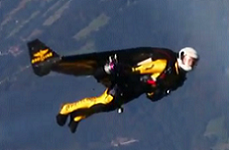
101 Things Every Six Sigma Black Belt Should Know
51. The Six Sigma Black Belt should know when to apply analytic statistical methods, and when not
to.
52. The Six Sigma Black Belt should demonstrate a grasp of basic probability concepts, such as
the probability of mutually exclusive events, of dependent and independent
events, of events that can occur simultaneously, etc.
53. The Six Sigma Black Belt should know factorials, permutations and combinations, and how to
use these in commonly used probability distributions.
54. The Six Sigma Black Belt should be able to compute expected values for continuous and discrete
random variables.
55. The Six Sigma Black Belt should be able to compute univariate statistics for samples.
56. The Six Sigma Black Belt should be able to compute confidence intervals for various statistics.v
57. The Six Sigma Black Belt should be able to read values from a cumulative frequency ogive.
58. The Six Sigma Black Belt should be familiar with the commonly used probability distributions,
including: hypergeometric, binomial, Poisson, normal, exponential,
chi-square, Student’s t, and F.
59. Given a set of data the Six Sigma Black Belt should be able to correctly identify which distribution
should be used to perform a given analysis, and to use the distribution
to perform the analysis.
60. The Six Sigma Black Belt should know that different techniques are required for analysis depending
on whether a given measure (e.g., the mean) is assumed known or estimated
from a sample. The Six Sigma Black Belt should choose and properly
use the correct technique when provided with data and sufficient information
about the data.
61. Given a set of subgrouped data, the Six Sigma Black Belt should be able to select and prepare
the correct control charts and to determine if a given process is
in a state of statistical control.
62. The above should be demonstrated for data representing all of the most common control charts.
63. The Six Sigma Black Belt should understand the assumptions that underlie ANOVA, and be able
to select and apply a transformation to the data.
64. The Six Sigma Black Belt should be able to identify which cause on a list of possible causes
will most likely explain a non-random pattern in the regression residuals.
65. If shown control chart patterns, the Six Sigma Black Belt should be able to match the control chart
with the correct situation (e.g., an outlier pattern vs. a gradual
trend matched to a tool breaking vs. a machine gradually warming up).
66. The Six Sigma Black Belt should understand the mechanics of PRE-Control.
67. The Six Sigma Black Belt should be able to correctly apply EWMA charts to a process with serial
correlation in the data.
68. Given a stable set of subgrouped data, the Six Sigma Black Belt should be able to perform a complete
Process Capability Analysis. This includes computing and interpreting
capability indices, estimating the % failures, control limit calculations,
etc.
69. The Six Sigma Black Belt should demonstrate an awareness of the assumptions that underlie the
use of capability indices.
70. Given the results of a replicated 22 full-factorial experiment, the Six Sigma Black Belt should be able
to complete the entire ANOVA table.
71. The Six Sigma Black Belt should understand the basic principles of planning a statistically
designed experiment. This can be demonstrated by critiquing various
experimental plans with or without shortcomings.
72. Given a “clean” experimental plan, the Six Sigma Black Belt should be able to find
the correct number of replicates to obtain a desired power.
73. The Six Sigma Black Belt should know the difference between the various types of experimental
models (fixed-effects, random-effects, mixed).
74. The Six Sigma Black Belt should understand the concepts of randomization and blocking.
75. Given a set of data, the Six Sigma Black Belt should be able to perform a Latin Square analysis
and interpret the results.
76. Ditto for one way ANOVA, two way ANOVA (with and without replicates), full and fractional factorials,
and response surface designs.
77. Given an appropriate experimental result, the Six Sigma Black Belt should be able to compute the direction
of steepest ascent.
78. Given a set of variables each at two levels, the Six Sigma Black Belt can determine the correct
experimental layout for a screening experiment using a saturated design.
79. Given data for such an experiment, the Six Sigma Black Belt can identify which main effects are significant
and state the effect of these factors.
80. Given two or more sets of responses to categorical items (e.g., customer survey responses categorized
as poor, fair, good, excellent), the Six Sigma Black Belt will be
able to perform a Chi-Square test to determine if the samples are
significantly different.
81. The Six Sigma Black Belt will understand the idea of confounding and be able to identify which
two factor interactions are confounded with the significant main effects.
82. The Six Sigma Black Beltwill be able to state the direction of steepest ascent from experimental
data.
83. The Six Sigma Black Belt will understand fold over designs and be able to identify the fold
over design that will clear a given alias.
84. The Six Sigma Black Belt will know how to augment a factorial design to create a composite
or central composite design.
85. The Six Sigma Black Belt will be able to evaluate the diagnostics for an experiment.
86. The Six Sigma Black Belt will be able to identify the need for a transformation in y and to
apply the correct transformation.
87. Given a response surface equation in quadratic form, the Six Sigma Black Belt will be able
to compute the stationary point.
88. Given data (not graphics), the Six Sigma Black Belt will be able to determine if the stationary
point is a maximum, minimum or saddle point.
89. The Six Sigma Black Belt will be able to use a quadratic loss function to compute the cost
of a given process.
90. The Six Sigma Black Belt will be able to conduct simple and multiple linear regression.
91. The Six Sigma Black Belt will be able to identify patterns in residuals from an improper regression
model and to apply the correct remedy.
92. The Six Sigma Black Belt will understand the difference between regression and correlation
studies.
93. The Six Sigma Black Belt will be able to perform chi-square analysis of contingency tables.
94. The Six Sigma Black Belt will be able to compute basic reliability statistics (mtbf, availability,
etc.).
95. Given the failure rates for given subsystems, the Six Sigma Black Belt will be able to use
reliability apportionment to set mtbf goals.
96. The Six Sigma Black Belt will be able to compute the reliability of series, parallel, and series-parallel
system configurations.
97. The Six Sigma Black Belt will demonstrate the ability to create and read an FMEA analysis.
98. The Six Sigma Black Belt will demonstrate the ability to create and read a fault tree.
99. Given distributions of strength and stress, the Six Sigma Black Belt will be able to compute the probability
of failure.
100. The Six Sigma Black Belt will be able to apply statistical tolerancing to set tolerances for
simple assemblies. He will know how to compare statistical tolerances
to so-called “worst case” tolerancing.
101. The Six Sigma Black Belt will be aware of the limits of the Six Sigma approach.








